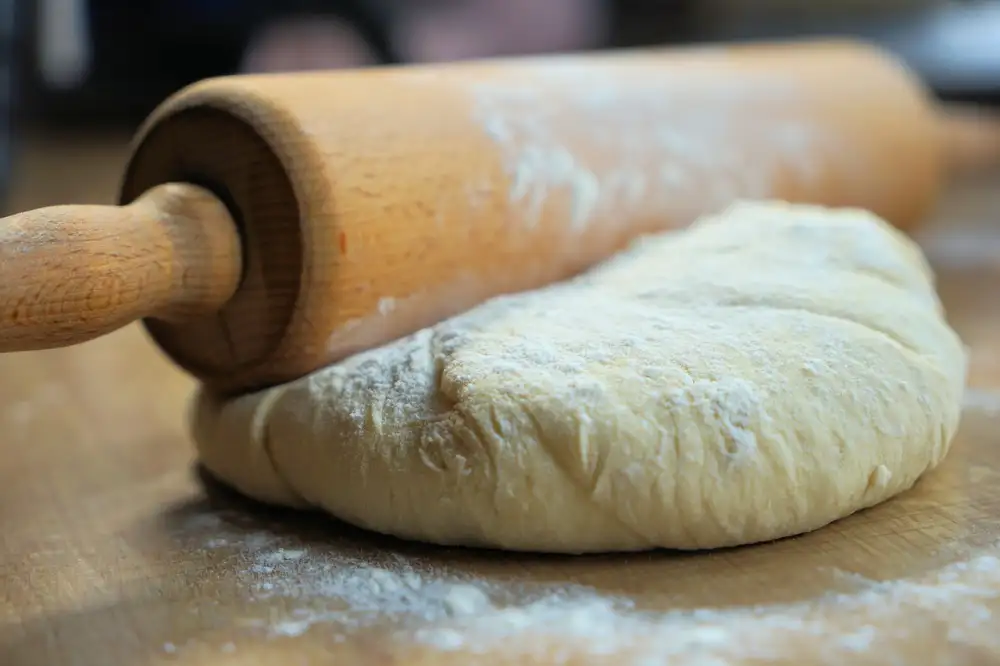Delightful Ciabatta Recipes: Elevate Your Baking Skills with this Italian Bread Classic

Ciabatta bread, originating from Italy, is a rustic and chewy bread known for its unique shape and airy texture. The name "ciabatta" translates to slipper in Italian, referencing its elongated, flat shape resembling a slipper. This bread is characterized by large air holes throughout the crumb and a crisp crust, making it perfect for sandwiches or dipping into olive oil. Ciabatta is made using a high-hydration dough, resulting in its signature open crumb structure. Its simple yet delicious flavor profile makes it a versatile choice for various culinary creations.
Ingredients required for making Ciabatta
To make delicious Ciabatta bread, you will need the following ingredients: 4 cups of bread flour, 2 teaspoons of active dry yeast, 1 and ½ teaspoons of salt, 2 cups of lukewarm water, and a little extra flour for dusting. These simple ingredients come together to create the unique texture and flavor that Ciabatta is known for. Make sure to use high-quality bread flour for the best results in achieving that signature chewy interior and crispy crust.
Step-by-step instructions for preparing Ciabatta dough
1. Begin by mixing 500g of bread flour, 10g of salt, and 7g of instant yeast in a large bowl.
2. Add 350ml of lukewarm water to the dry ingredients and mix until a sticky dough forms.
3. Cover the bowl with a damp cloth and let it rest for about 1-2 hours, allowing the dough to rise.
4. After the initial rise, fold the dough over itself a few times to develop gluten.
5. Divide the dough into two equal portions and shape them into rectangles on a well-floured surface.
6. Transfer the shaped loaves onto a floured baking sheet or couche for their final rise of about 1 hour.
7. Preheat your oven to 220°C (425°F) with a baking stone or upside-down baking sheet inside.
8. Once the loaves have risen, carefully transfer them onto the preheated baking surface using a peel or parchment paper.
9. Bake for approximately 25-30 minutes until golden brown and hollow-sounding when tapped on the bottom.
10. Allow the Ciabatta loaves to cool on a wire rack before slicing and serving.
Following these steps will help you achieve that signature airy texture and chewy crust that Ciabatta bread is known for.
Tips for achieving the perfect texture and flavor
To achieve the perfect texture and flavor when making Ciabatta bread, it is essential to pay attention to a few key tips. Firstly, ensure that the dough is well-hydrated by using the right amount of water. The dough should be sticky but not overly wet. Secondly, allow for a long fermentation period to develop the characteristic open crumb structure and complex flavors. This can take anywhere from 12 to 18 hours at room temperature or longer in the fridge. Lastly, use high-quality flour with a protein content of around 12-14% for the best results. These tips will help you create a deliciously light and airy Ciabatta with a chewy crust and a soft interior.
Baking and serving suggestions for Ciabatta bread
When it comes to baking and serving Ciabatta bread, there are a few key suggestions to keep in mind. Firstly, ensure that your oven is preheated to the correct temperature (typically around 450°F) before placing the dough inside. This will help create that signature crispy crust.
Once baked, allow the Ciabatta to cool on a wire rack for at least 30 minutes before slicing into it. This resting period allows the flavors to fully develop and the texture to set properly.
For serving, Ciabatta is best enjoyed fresh on the day it's made. It pairs wonderfully with olive oil and balsamic vinegar for dipping or can be used as a base for bruschetta or sandwiches. Its airy crumb structure also makes it ideal for soaking up sauces in dishes like panzanella salad or soups.
Remember, Ciabatta is a versatile bread that can elevate any meal with its rustic charm and delicious flavor profile.
Variations and additions to traditional Ciabatta recipes
Variations and additions to traditional Ciabatta recipes offer a creative twist to this Italian classic. For a savory option, try adding chopped olives, sun-dried tomatoes, or fresh herbs like rosemary or thyme to the dough before baking. For a touch of sweetness, consider incorporating dried fruits such as cranberries or apricots along with a sprinkle of cinnamon. Experiment with different types of cheeses like Parmesan or Gruyère for a cheesy Ciabatta variation. Additionally, you can top the bread with seeds like sesame or poppy seeds for added crunch and flavor. These variations can elevate the taste profile of your Ciabatta bread and add an exciting element to your baking repertoire.
Health benefits of consuming Ciabatta bread
Ciabatta bread offers several health benefits due to its simple ingredients and baking process. It is lower in calories and fat compared to many other types of bread, making it a healthier option for those watching their weight. Additionally, Ciabatta has a lower glycemic index than white bread, which means it can help regulate blood sugar levels more effectively. The use of olive oil in Ciabatta also provides heart-healthy monounsaturated fats that can help reduce the risk of heart disease. Lastly, the long fermentation process used in making Ciabatta helps break down gluten proteins, making it easier to digest for some individuals with gluten sensitivities. Incorporating Ciabatta bread into your diet can be a delicious way to enjoy these health benefits while indulging in a tasty Italian classic.
In conclusion, Ciabatta bread is a versatile and delicious Italian classic that can elevate any meal or snack. Its airy texture and chewy crust make it a favorite among bread enthusiasts worldwide. By mastering the art of making Ciabatta at home, you can enjoy the satisfaction of creating a bakery-quality loaf in your own kitchen. Whether enjoyed fresh out of the oven with olive oil and balsamic vinegar or used as a base for sandwiches and bruschetta, Ciabatta is sure to delight your taste buds. Incorporating this artisanal bread into your culinary repertoire will not only enhance your baking skills but also introduce you to the rich tradition of Italian bread-making. So, roll up your sleeves, preheat your oven, and embark on a delightful journey of baking and savoring homemade Ciabatta bread.
Published: 08. 05. 2024
Category: Recipes



